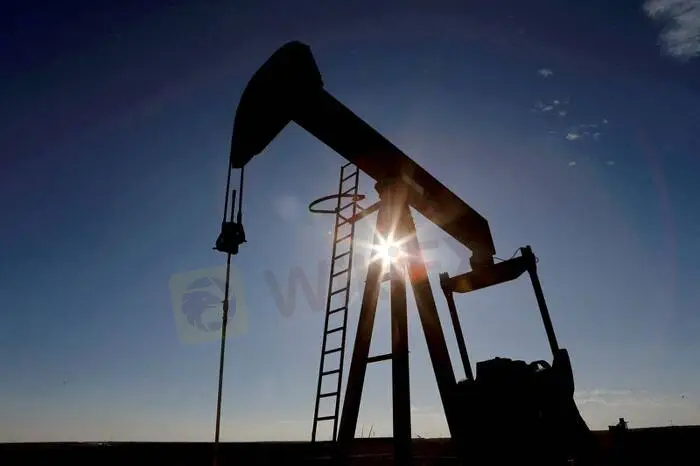简体中文
繁體中文
English
Pусский
日本語
ภาษาไทย
Tiếng Việt
Bahasa Indonesia
Español
हिन्दी
Filippiiniläinen
Français
Deutsch
Português
Türkçe
한국어
العربية
Oil rises to 7-year high as Turkey outage adds to tight supply outlook
Abstract:Oil prices rose for a fourth day to a seven-year high as an outage on a pipeline from Iraq to Turkey increased concerns about an already tight supply outlook amid worrisome geopolitical troubles in Russia and the United Arab Emirates.

Brent crude futures rose $1.44, or 1.7%, to $88.95 a barrel at 0230 GMT, adding to a 1.2% jump in the previous session. The benchmark contract climbed to as much as $89.05, its highest since Oct. 13, 2014.
U.S. West Texas Intermediate (WTI) crude futures climbed $1.51, or 1.8%, to $86.94 a barrel, adding to a 1.9% gain on Tuesday. WTI earlier jumped to a high of $87.08, its highest since Oct. 9, 2014.
Turkeys state pipeline operator Botas said on Tuesday that it cut oil flows on the Kirkuk-Ceyhan pipeline after an explosion on the system. The cause of the explosion is not known.
The pipeline carries crude out of Iraq, the second-largest producer in the Organization of the Petroleum Exporting Countries (OPEC), to the Turkish port of Ceyhan for export.
The loss comes as analysts are forecasting tight oil supply in 2022, driven in part by demand holding up much better than expected against the highly contagious Omicron coronavirus variant, with some calling for a return of $100 oil.
Geopolitical issues in Russia, the world‘s second-largest oil producer, and the UAE, OPEC’s third-largest producer, are adding to the supply concerns.
The UAE late on Tuesday called for a meeting of the United Nations Security Council to condemn an attack on Abu Dhabi on Monday by Yemens Houthi movement, which has threatened further attacks.
Meanwhile, Russian troops are lined up on the border of Ukraine, with the White House calling the crisis extremely dangerous and saying Russia could invade at any point.
The tensions raise the prospect of supply disruptions at a time when OPEC, Russia and their allies, together called OPEC+, are already having difficulty meeting their agreed target to add 400,000 barrels per day of supply each month.
“OPEC+ is falling short of hitting their production quotas and if geopolitical tensions continue to heat up, Brent crude might not need much of a push to get to $100 a barrel,” OANDA analyst Edward Moya said in a note.
Jet fuel consumption is rising with growth in international flights, while road traffic is much higher than the same time last year, Commonwealth Bank commodities analyst Vivek Dhar said in a note.
“OPEC+ supply constraints and the ongoing increase in global oil demand will likely keep oil prices well supported in coming months,” Dhar said.

Disclaimer:
The views in this article only represent the author's personal views, and do not constitute investment advice on this platform. This platform does not guarantee the accuracy, completeness and timeliness of the information in the article, and will not be liable for any loss caused by the use of or reliance on the information in the article.
Read more

Will the Euro and US Dollar Reach Parity in 2025?
Euro-dollar parity sparks debate again as 2025 approaches, with multiple factors shaping the exchange rate outlook.

US Dollar Surge Dominates Forex Market
The global forex market continues to show volatility, with the U.S. dollar fluctuating last week but overall maintaining a strong upward trend. How long can this momentum last?

Oil Prices Soar for 5 Days: How Long Will It Last?
Last week, the global oil market saw a strong performance, with Brent crude and WTI crude prices rising by 2.4% and around 5% respectively. Oil prices have now posted five consecutive days of gains. But how long can this rally last?

Fed Signals Only Two Rate Cuts This Year as Inflation Remains Above 2% Target
The Federal Reserve prioritizes inflation control and economic stability, signaling limited rate cuts amid persistent price pressures.
WikiFX Broker
Latest News
Bitcoin in 2025: The Opportunities and Challenges Ahead
BI Apprehends Japanese Scam Leader in Manila
Join the Event & Level Up Your Forex Journey
Is There Still Opportunity as Gold Reaches 4-Week High?
Bitcoin miner\s claim to recover £600m in Newport tip thrown out
Good News Malaysia: Ready for 5% GDP Growth in 2025!
How to Automate Forex and Crypto Trading for Better Profits
Breaking News! Federal Reserve Slows Down Interest Rate Cuts
Beware: Pig Butchering Scam Targeting Vulnerable Individuals
This Economic Indicator Sparks Speculation of a Japan Rate Hike!
Currency Calculator






